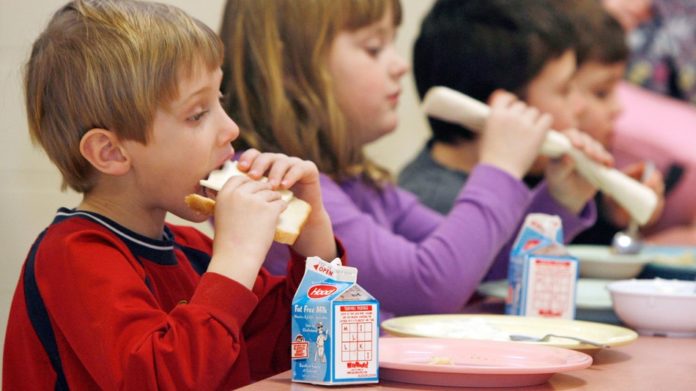Home-Packed Lunches Often Flunk Nutrition, Study Finds

There are many benefits of packing a lunch for your child. In most cases, you save money and gain the peace of mind of knowing that your kids aren’t left to their own devices in the lunch line (french fries and apple pie, anyone?).
But are you giving your kids the best meal they could eat? It turns out that the brown-bag lunches we make may be less nutritious than we think they are, according to a study published last month in the Journal of the Academy of Nutrition and Dietetics.
The study showed that most home-packed lunches flunked when they were graded based on the criteria set by the National School Lunch Program. This organization requires that school lunches contain servings from all five major food groups: fruit, veggies, grains, protein and dairy.
But when researchers studied lunches from over 600 third and fourth graders, the results showed that none of the home-packed lunches contained servings from all of the food groups. None.
In fact, only 27% of the lunches contained three or more food groups. The typical lunch contained a sandwich, chips and water. Sugar-sweetened beverages were a close second beverage choice. Milk, an excellent source of calcium, was missing from most lunches. It could be an oversight, personal preference or lactose intolerance that is causing this issue, but milk seems to be an unpopular choice.
Here are some great non-milk sources of calcium that may work well in those brown-bag lunches:
-
Kale chips: Baked kale chips are an amazing replacement for those greasy potato chips. Not only is kale a calcium-rich food, but it’s also a great source of many other vitamins and minerals, such as vitamin A, iron and potassium.
-
Oranges: Just one large navel orange provides 74 milligrams of calcium, which equates to about 7 percent of the recommended daily value. Oranges are also known for their vitamin C content, and can satisfy the requirement for one serving of fruit. For a calcium boost, include oranges in a lunch, along with another item on this list.
-
Almonds: Just one cup of almonds contains 243 milligrams of calcium, about the same as a glass of whole milk. And here’s a bonus: You’ll also be giving your kids 61 percent of the recommended daily value of magnesium (score!).
-
Sunflower seeds: Sunflower seeds can be fun for kids to open and eat, as long as they are old enough to handle the task, and one cup contains 109 milligrams of calcium. They are also quite filling, with 12 grams of fiber.
-
Broccoli: It can be a challenge to get kids to eat veggies, but broccoli is one of those greens that can usually fly under the radar. One serving contains about 70 milligrams of calcium and more than double the recommended daily value of vitamin C.
- Pharaoh-Branded Amulet Found at Ancient Copper Mine in Jordan
- Prize for 480 New Varieties of Wheat
- Are Testosterone Supplements Really Necessary?
- Prelude to Offshore Drilling Not a Blast for All (Op-Ed)
This article originally published at LiveScience here

